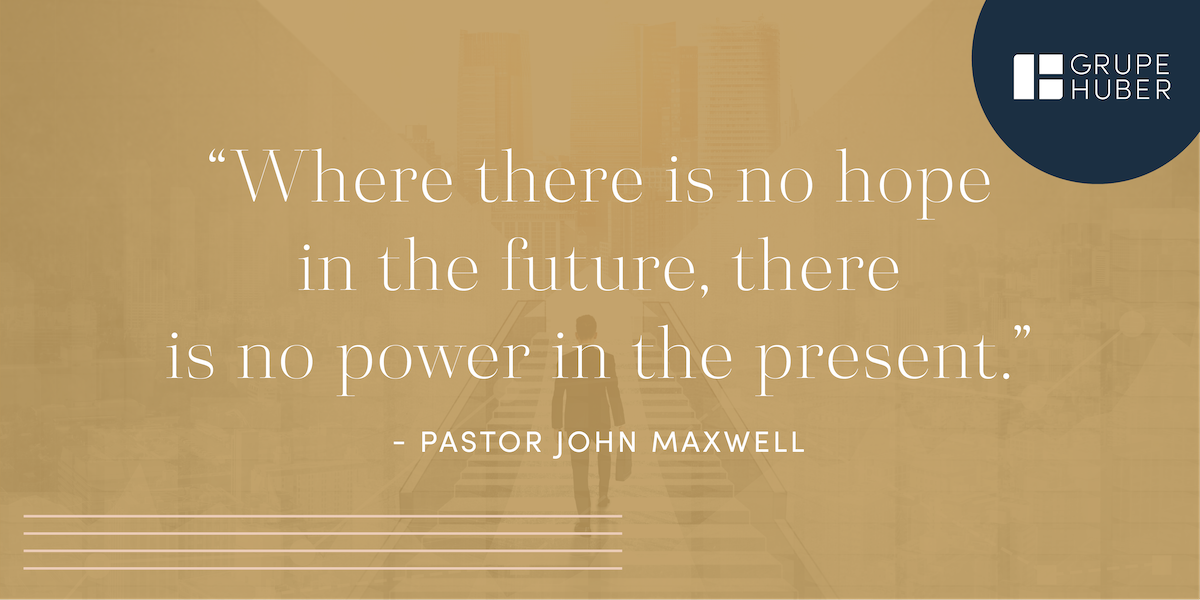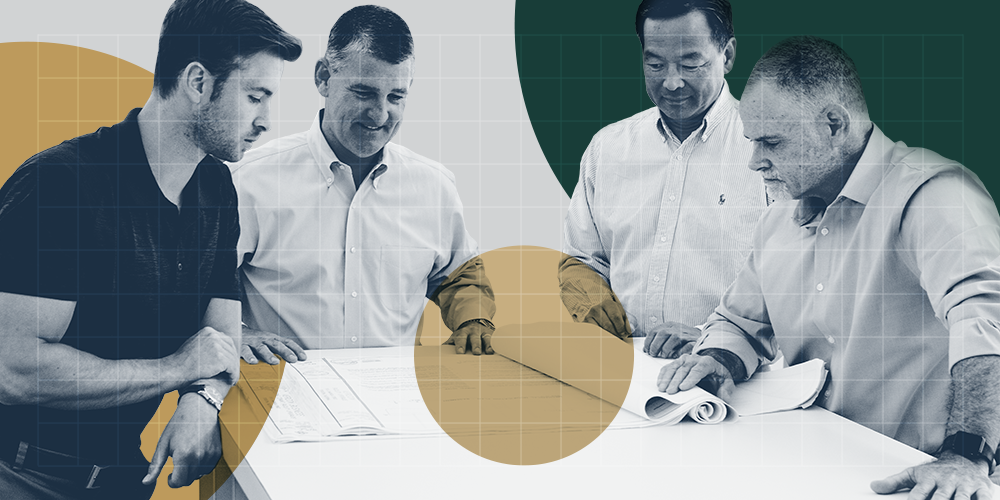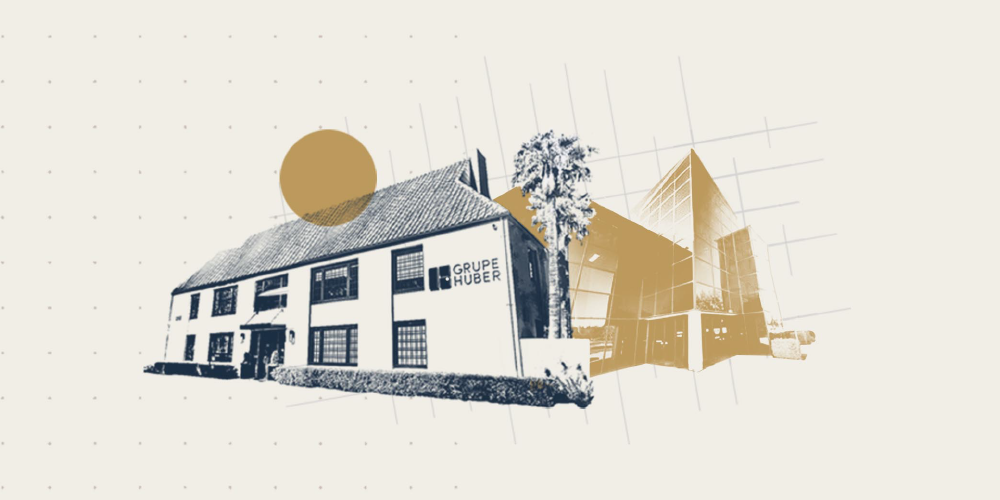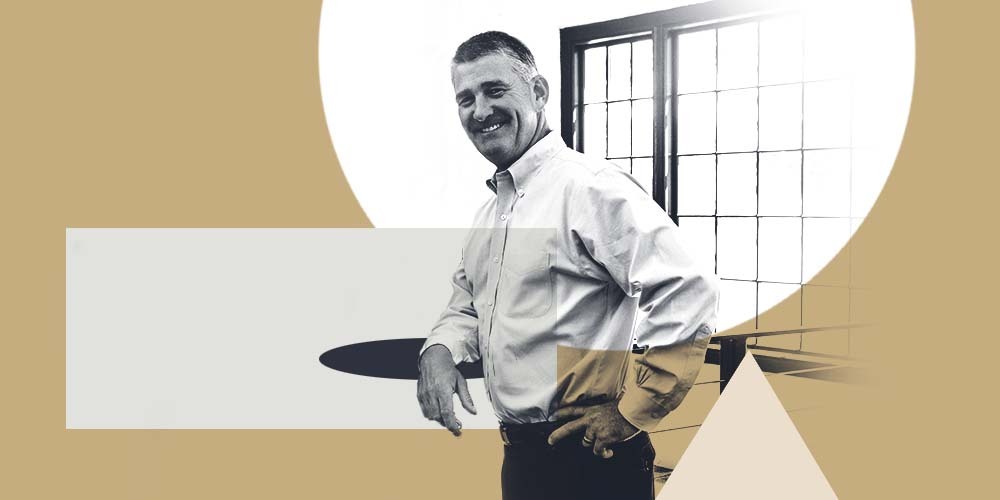Choosing Happiness, Having Hope in the Future, and Other Observations
Choosing Happiness, Having Hope in the Future, and Other Observations
by Kevin Huber, President & CEO
February 8, 2022
“Happy New Year!”
We’ve all said that, or heard it spoken to us, in a greeting over the last few weeks…Do you feel happy is my question?
With all that is going on in the world today – the Omicron variant, rising inflation, geo-political instability, roller-coaster stock market moves, national political division, and our own business and family issues – one could see why being happy might feel elusive.
So, why is it that during times of crisis, some people seem naturally happier than others, have less stress and seem more clear-minded with better self-control despite their circumstances?
Many of the skills that Sandy and I have learned to deal with stress were learned from Sandy’s father and mother. We also believe that having faith in a positive future gives you the power to deal with the crisis of today. Lessons like these have allowed us to weather adverse conditions with our happiness intact.
I recently remembered an article that Sandy’s father Fritz wrote several years ago (33 to be exact) that resonates with me today just as much as it did when it was written. Some of life’s lessons are timeless, so I thought I would share that article with you and hope that it helps you to develop or improve the skills that will help you find happiness amongst all the issues of today.
Just to put things in perspective and demonstrate that there were plenty of stressful issues when Fritz wrote this article, let me remind you what was going on around 1989. The Cold War was still going on. The Berlin Wall didn’t fall until November of ’89. The Exxon Valdez Oil Spill occurred. The Loma Prieta Earthquake killed over 60 people. The Iran-Iraq War had just ended, but tensions in the Middle East persisted (ultimately leading to the Iraqi Invasion of Kuwait in 1990 and the Oil Price Shock/Recession of that time. It was the tail end of the Savings and Loan Crisis which redefined how The Grupe Company would finance projects going forward, and the 30 Year Mortgage rate was a whopping 10.3%! (Imagine how that would affect home purchases today!). Certainly, there was plenty to be worried about. You’ll also note that Fritz’s article has a “second installment” which was also one of my favorite articles about leadership skills that are innate and those that can be taught. I’ll share that with you in a future Newsletter. I hope you enjoy Fritz’s article as much as I did.
All of us at Grupe Huber sincerely wish you a happy 2022.
Fall 1989
Observations
Greenlaw “Fritz” Grupe, Jr., Chairman/CEO
Recently, I was called upon to speak before the University of the Pacific’s Business Forum. The audience was to be a mixed group of 600 experienced managers, professors, and students. Therefore, I tried to tailor my remarks so that each group would derive some “take home value.” Because the feedback was so good, I thought I would try to summarize it for two Blueprint articles; this being the first one. I hope my thoughts here trigger a new idea or reactivate an old one.
The excellent managers of the 90’s are going to be the happiest ones. Since happiness is a by-product, not an end in itself, how will managers achieve it.
First, I submit that life won’t get any better than it is today. This is it. You’ve arrived. Are you happy? Are you in control? If you’re in control, you’re a winner. Only losers place the blame.
Socrates said, “If all misfortunes were laid in one common heap, whence everyone must take an equal portion, most people would be contented to take their own and depart”.
Second: It is important to distinguish between accomplishment and accomplishing. Accomplishment, such as the winning of a race, gives short term good feelings. Those good feelings don’t last. The process is the key; it is the continuation of accomplishment which produces the lasting good feelings.
Third: You have to distinguish the urgent from the important. You can get trapped in completing only urgent things and end your career having accomplished nothing important.
Fourth: A balanced life is a clear route to happiness. As Yogi Berra said, “90% of the game is one half mental.”
In regards to balance, I want to discuss stress. How do some people deal better with it than others? First, let’s understand stress:
1. It’s a matter of perspective. Is it really going to make a difference 100 years from now?
2. Symptoms of stress:
a. If I’m so successful, how come I don’t feel I have it made?
b. How many colds or illnesses do I have?
c. Do I feel I’m always in the slow lane of traffic or at the grocery store?
Controlling stress is imperative because stress decreases your energy and your passion for other things, yet makes you feel you’re working harder than anyone else. Most important, you become insensitive to the feelings of others and as a result drive people away from you. Relationships, so important to everyone’s future, cannot be built on guilt or martyrdom.
3. Success is when you feel safe; many don’t feel safe without stress. If everything is going smoothly, they’ll go in and stir up the pot or take on a new challenge.
Why do people allow themselves to get stressed out?
a. Many people just want to be stressed. It’s exciting. The adrenaline flows. Have you seen the sign: If you’re not stressed, you just don’t understand the situation?
b. Many enjoy acting like a martyr. “Look what I stand for in the face of everything.”
c. Some can act more important. “Look at all I’m doing.”
d. All businesses cause stress; it’s hard to step out of your “business” culture. (In ours, it has been popular to work excessively, stressfully.)
Here are some things that will increase your stress level:
1. Waiting for someone else to change.
2. Waiting for justice.
3. Waiting for people to know you’re right.
Here are some ways you can decrease stress.
1. Exercise.
2. Start and end the day on a happy note. (most morning newspapers and television news programs present negative news. Wait until the evening to catch up on the news.)
3. Make sure the patterns of your days please you, and include activities for which you have a passion.
4. Evaluate the amount of bliss and passion you experience. Make up a list of things that may not require anyone else to make you happy. Here are some of mine:
a. Music
b. Dreaming/visioning
c. Solitude
d. Views of the environment
e. Smells
f. Knowledge
g. Sports
h. Business
i. Raising animals
j. Meditation, a relationship with God
Remember, if you won’t give yourself a little bliss, you won’t allow others to have it either. If success is when you feel safe, and if you don’t feel safe without stress, you’re going to have a real problem with success.
We all must accept responsibility for the pace, quality and balance of our lives.
In summation, there are eight things I believe managers in particular and really everyone should consider:
1. A balanced life (spiritual, family, work, personal time, personal health);
2. Relationships, intimacies;
3. Passions, bliss;
4. Success without undue stress;
5. Continuing education;
6. Leadership versus the traditional boss; doing the right thing versus doing things right;
7. Communication of a clear vision of the future to co-workers and family;
8. A clear vision of our global environment.
So, to conclude this segment, I wish you happiness because I know it is the by-product of a successful contributing person in society.
In my second installment in our next Blueprint, I’ll address the question: is leadership an art or a science? If it is partly art, which part then can be taught?






